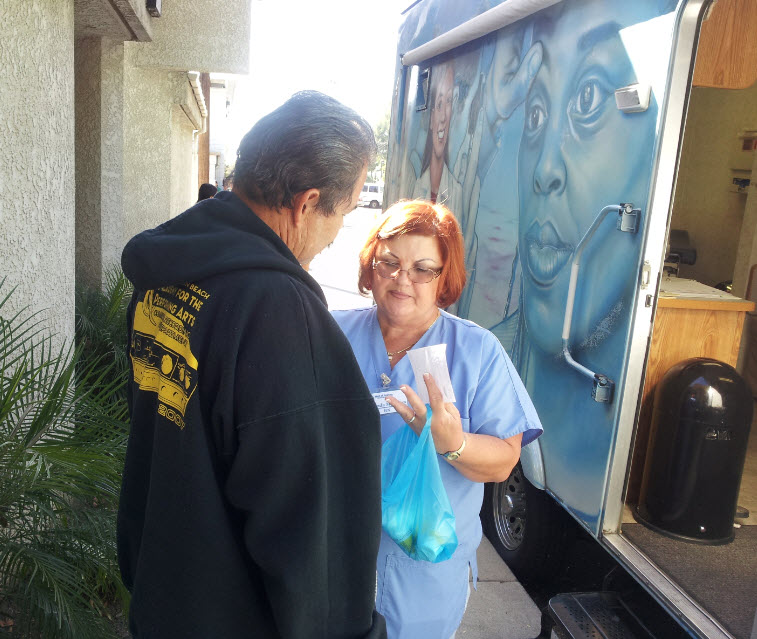

By Chris Richard
Seeking to extend health care to the poor, medical teams from Loma Linda University Medical Center and a few other hospitals are turning to organizations long accustomed to neighborhood service: churches.
“If you look at what contributes to chronic disease, a lot of it comes down to lifestyle and values, so faith communities are a good partner in helping to promote a healthy lifestyle,” said Dora Barilla, director of community benefits for Loma Linda University Medical Center and an assistant professor in health policy and management at the Loma Linda University School of Public Health.
“We’re really getting back to realizing how critical these relationships are in health improvement.”
Loma Linda is collaborating with churches in Riverside and San Bernardino counties to deliver some 80 outreach programs, ranging from childhood obesity prevention to basic medical services.
The Seventh-day Adventist-affiliated Medical Center’s initiative was one of a handful of programs highlighted last month at a White House conference on new ways to deliver preventive health care.
Mara Vanderslice, director of the U.S. Department of Health and Human Service’s Office of Faith Based and Neighborhood Partnerships, said participants were selected from some of the most innovative programs her staff could identify.
One model Loma Linda program is its collaboration with the Well of Healing Mobile Medical Clinic. The clinic, housed in a converted 30-foot recreational vehicle, is state licensed as a primary care clinic that provides medical tests, pharmacy services and physician consultation every weekend at churches throughout San Bernardino County. Angela Coaston, Well of Healing’s executive director, said technical mapping assistance by Loma Linda helped the clinic identify the poorest, highest-need neighborhoods.
At one recent Well of Healing event, volunteer nurse Rhonda Matthews said there’s clearly a need to expand services.
“We’re trying to help people and we don’t have the funds to do it,” she said. “When we run out of money for medicine, patients have to go get a prescription. Some of them don’t. Some of them come in with high blood pressure because they haven’t had meds for two months.”
Geraldine Aikens of Rialto, 75, said she’s come to rely on Well of Healing for her diabetes medication.
Although she has private medical insurance, she can’t afford the $5 to $15 payments for prescriptions, Aikens said.
“I know if I come to these people, there will be somebody to look after my needs,” she said. “Without them, I don’t know what I’d do. I guess I’d have to go without food to pay for the medicine.”
Coaston said the clinic has become Aikens’ “medical home,” an approach central to California’s Medi-Cal expanision under national health care reform. Medical homes emphasize preventive medicine by having a single physician or close-knit medical team manage all aspects of the client’s care.
Coaston said she hopes that as reforms move forward, more money will be available for faith-based care.
“This reform gives leverage to organizations like Loma Linda that are seeking to care for the poor,” she said. “It gives them leverage to say, ‘Hey, this is the initiative. This is what the Obama administration is encouraging. Let’s come together.”
Vanderslice, the federal health official, said there are no immediate plans to supplement the funding faith-based institutions like Loma Linda already allocate for community care.
But she said the Department of Health and Human Services does want to do all it can to draw attention to programs like Loma Lindas as models for other medical institutions nationwide.






You must be logged in to post a comment.